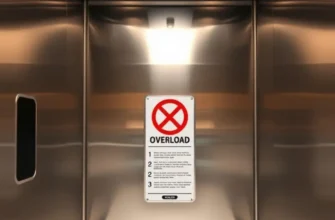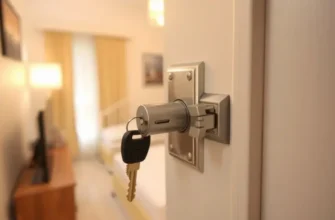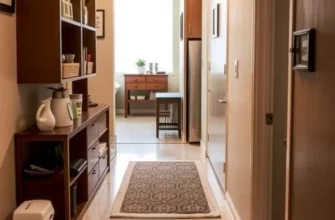Carbon monoxide (CO) is a silent threat that lurks in many households, often going unnoticed until it’s too late. For renters living in apartments, understanding and mitigating the risks associated with carbon monoxide is crucial for ensuring safety and security. This odorless, colorless gas can stem from various sources, including gas stoves, furnaces, and even vehicles left running in enclosed spaces. As a renter, proactive measures can help you safeguard your home from carbon monoxide poisoning and its potentially fatal consequences. Whether you’re in a historic building or a modern complex, knowing what to look for and how to act can help you maintain a healthy living environment. From installing detectors to recognizing early warning signs, let’s dive into practical, hassle-free maintenance solutions that not only prioritize safety but also guarantee peace of mind for you and your loved ones.
Understanding Carbon Monoxide: The Silent Killer

Carbon monoxide (CO) is a colorless, odorless gas that poses severe health risks, often known as a ‘silent killer’ due to its undetectable nature absent proper devices. Commonly generated by the incomplete combustion of fuels, CO can originate from various sources, especially within the confines of an apartment.
Appliances such as gas-powered stoves, furnaces, water heaters, and fireplaces are potential CO emitters. Without adequate maintenance or ventilation, these appliances may leak CO into living spaces. Old or malfunctioning systems are significantly hazardous, necessitating renters’ vigilance regarding their condition.
Recognizing CO exposure symptoms is crucial. Initial signs often mimic flu-like symptoms, such as headaches, dizziness, weakness, nausea, vomiting, chest pain, and confusion. Prolonged exposure can lead to severe neurological damage or even death. Due to their discrete onset and severity, these symptoms highlight CO’s insidious danger.
In rented apartments, the importance of proper ventilation cannot be overstated. Ensuring that flues and chimneys are unobstructed helps convey emissions outside, while regular checks of ventilation systems enhance safety. Renters should also confirm that carbon monoxide detectors are installed and functioning effectively in their apartments. These detectors, typically placed in key locations such as near sleeping areas and fuel-burning appliances, are vital in providing early warning.
Regular maintenance of appliances is an essential preventive measure. Renters can advocate for annual inspections by certified professionals, ensuring systems are safe and compliant with safety standards. It’s wise to inquire about the history of maintenance for appliances before signing a lease or moving into a new apartment.
Inspecting living spaces for potential threats involves a guided approach. Check for signs of rust or stains near combustion appliances. These may indicate prior issues that need attention. Proper seals and absence of gaps in the systems are equally critical.
Furthermore, good communication with the landlord is vital. If any issues or potential breaches are noticed, they should be reported immediately for swift resolution. Having a clear understanding of the maintenance responsibilities outlined in the lease can help in addressing these concerns efficiently.
For more comprehensive advice on emergency preparedness related to home safety, consider visiting Emergency Preparedness for Renters, which details extensive safety protocols.
By understanding CO’s potential risks and maintaining vigilance, renters can significantly enhance their safety and well-being. Regular check-ups, effective communication, and awareness are the keystones of ensuring a safe living environment free from the dangers of carbon monoxide.
Proactive Steps to Ensure Your Safety

Carbon monoxide (CO) is often referred to as the “silent killer” due to its colorless and odorless nature. Understanding its danger and actively taking preventive measures in your apartment can save lives. Here are some effective steps to help you protect yourself and your loved ones from CO risks.
Install Carbon Monoxide Detectors
The first line of defense against carbon monoxide poisoning is installing detectors. Place them in strategic areas such as near sleeping zones and on every level of your apartment. Make sure they are at least 5 feet above the ground to detect CO gas effectively. Always look for detectors that meet safety standards, and don’t forget to periodically check their expiration dates.
Regularly Test Alarm Functionality
Once installed, routinely test your carbon monoxide detectors to ensure they are functioning effectively. Most detectors have a “test” button that simulates a CO detection event. Doing so confirms that the device and its batteries are working properly. Set a reminder on your phone or calendar to test these alarms at least once a month.
Ensure Proper Ventilation
One of the simplest but most overlooked strategies is ensuring your apartment is well-ventilated. This is crucial, especially when using fuel-burning appliances like stoves or heaters. Check that vents and chimney flues are clean and not blocked by furniture or other items. If you notice unusual smells when operating gas appliances, open windows and doors immediately for ventilation.
Recognize Potential Hazards
Knowing what can cause carbon monoxide build-up is vital. Malfunctioning appliances, especially those burning fuel, are common culprits. Watch for signs like yellow flames instead of blue on gas appliances, or soot stains near your water heater or furnace. If you detect these signs, acting quickly can prevent dangerous CO levels.
Communicate With Your Landlord
As a renter, you might not have control over all aspects of your living environment. If you notice potential CO hazards or if your detectors are missing, inform your landlord immediately. Landlords are often responsible for ensuring that carbon monoxide detectors are in place and that appliances are serviced regularly.
Being proactive about carbon monoxide safety not only safeguards your well-being but also cultivates a culture of awareness and responsibility. By taking these steps, you can transform your apartment into a safer and more comfortable home. For more insights into safety measures, you might find this guide on home security tips for renters useful.
Final words
Understanding carbon monoxide safety is essential for all renters to create a safe living environment. By being proactive and well-informed about potential risks and the necessary safety measures, you can significantly reduce the chances of carbon monoxide exposure. Remember, installing detectors, keeping up with maintenance, and being aware of the signs of carbon monoxide poisoning are key steps in ensuring your peace of mind at home. Ultimately, fostering a culture of safety not only benefits you but also contributes to a safer community. Make it a priority to implement these strategies today, and breathe easy knowing that you are taking action to protect yourself and your loved ones.









